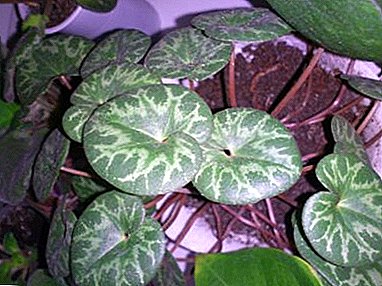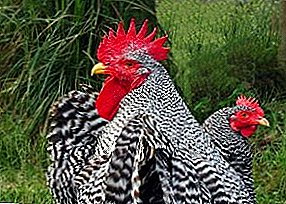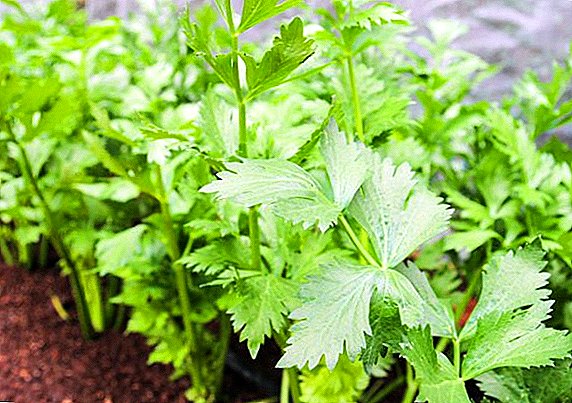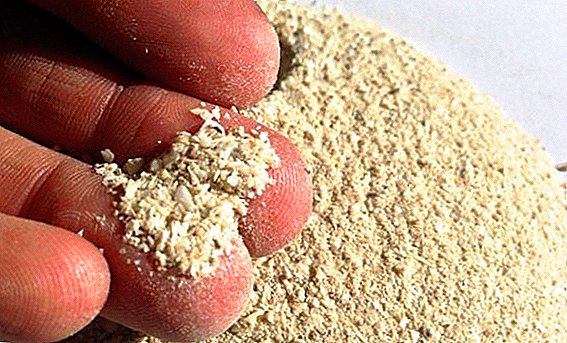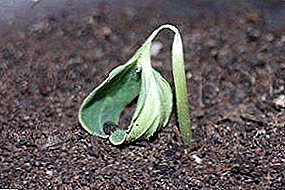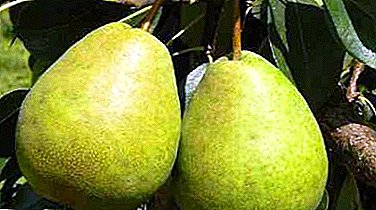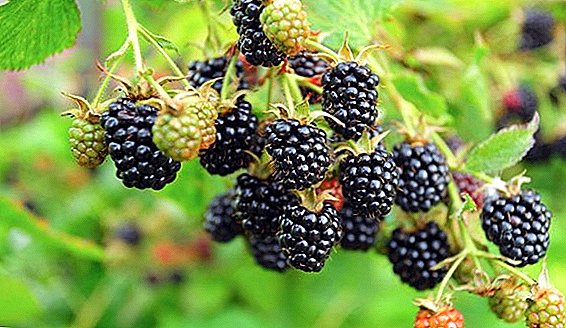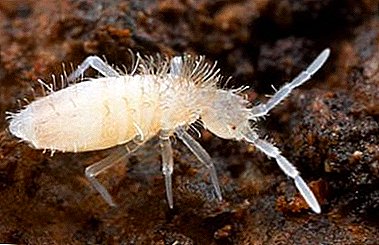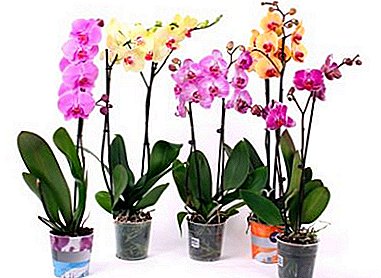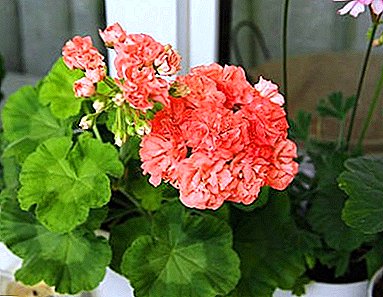
To date, we are amazed by the huge species diversity of pelargoniums. But with all this, caring for them did not become more difficult.
Pelargonium terry can be an excellent decoration not only at home or a balcony, but also of any garden plot in the summer.
In the article we describe the correct care for this species of plant, and also visually consider how the flower looks in the photo.
Botanical description and history
Pelargonium terry - indoor (sometimes garden) plantwhich belongs to the family of Geraniyevs. In the natural environment are found in the form of dwarf shrubs, a little less - shrubs. There are both annual and perennial species. There are among these varieties and terry, which, in turn, are also divided into subspecies:
- royal;
- zonal;
- ivy-shaped (ampelous) and so on.
 The variety got its name due to the special stock of petals - in the same row can be up to eight petals at a time. All of them grow not side by side, but as if investing in each other. Due to what the bud looks very lush.
The variety got its name due to the special stock of petals - in the same row can be up to eight petals at a time. All of them grow not side by side, but as if investing in each other. Due to what the bud looks very lush.
South Africa is considered to be the birthplace of the flower described, as well as India. In European countries, the plant appeared for the first time at the end of the 18th century. The inhabitants of Europe immediately appreciated the plant at its true worth, began to plant them en masse in their flowerbeds and window sills. Over time, pelargonium was named the symbol of the Victorian era and became an attribute of comfort in every home.
Cost of
For an adult plant in a flowerpot you will need to pay about two hundred rubles, but the seeds can be purchased at a lower price - about 100 rubles per pack (but there are varieties and cheaper).
Description of appearance and features
Terry pelargoniums are distinguished by a large number of petals that are collected in budslike umbrellas. The outer side of the petal is always a little lighter than the inner. Due to this, additional volume is added to the whole flower.
The peculiarity of the plant is its tart flavor, which is not suitable for everyone, and some, on the contrary, consider this feature an advantage.
Description and photo varieties
Purple
This variety includes many more subspecies.. For example:
- Brookside Fantasy (light violet-lilac color, brushes rather lush, terry);
- Amethyst (purple color);
- Lara Gem (lilac shade);
- Bold Pixie (color varies from lilac to purple);
- PAC Icecrystal (purple-lilac).

White
This view, in turn, is also divided into groups:
- Granny Barter (in its appearance is somewhat reminiscent of the snow-white bows of female students);
- Artic Princess (pure white buds similar to a ball);
- Delta Pearl;
- PAC Blanca;
- Dowepoint;
- Destiny.

Angel
This variety deserves special attention. It looks like a royal pelargonium. The difference is only in the form of a bush - it winds around in the Angel, but does not grow in a bushy bush.
Another distinctive feature is the small size of flowers - usually their diameter does not exceed two centimeters. The height of the bush reaches 35 centimeters. If it goes higher, it should be cut, otherwise all decoration will disappear. The hue of the petal can be different - from pale pink to lilac. In some cases, there are species with spots and stripes on the inside of the petal.

How to plant?
Choice of location and lighting
This pelargonium requires a lot of light. With its lack of foliage begins to turn yellow, and over time and completely fall off. Therefore, the most suitable place for a flower is the southern and eastern sides of the room. In winter, you will have to resort to additional lighting.
Important! Make sure that lamps of artificial lighting do not leave burns on the surface of terry pelargonium.
Ground Requirements
To grow a healthy and richly flowering plant, in the preparation of the soil must adhere to the following rules:
- The substrate must be fertile and loose.
- You can use the universal soil purchased in the store, but at the same time add peat and coarse river sand.
- Before planting, add mineral fertilizers to the substrate.
- Be sure to put a drainage layer, which can be prepared from expanded clay pebbles.
- The acidity of the soil should be at a neutral level.
Home Care Rules
Watering
 In summer, the soil is moistened 3-4 times a week. It is better to do this with distilled water at room temperature.
In summer, the soil is moistened 3-4 times a week. It is better to do this with distilled water at room temperature.
It is important to ensure that water does not accumulate in the ground. The most optimal method of watering is through a pallet. Thus, the plant will take the necessary amount of water, and the excess you will drain. In winter, the frequency of watering is reduced to once a week.
Air temperature
Pelargonium feels best in an average climate. Therefore, it is necessary to provide it with a temperature in the range of 20-25 degrees. With an increase in performance is a little cool plant. To do this, you can spray the air around.
Humidity
This indicator should always be at the level of 65-70%, try not to raise higher. But if the room is very stuffy, you can slightly raise the humidity, but you do not need to spray the plant itself.
Pruning
Terry pelargonium is a plant that requires constant pruning in order to form a regular-shaped shrub. As soon as the florist sees that the shoots have become too long and the flower loses its decorative effect.
This procedure is carried out with a well-sharpened instrument in order not to injure parts of pelargonium. After pruning, open areas can be treated with insecticides to protect the plant from infection.
Top dressing
Fertilize the plant twice a month. Use for this ready-made mineral complexes, which can be purchased at any flower shop. However, make sure that the fertilizer in equal proportions were present:
- potassium;
- magnesium;
- phosphorus.
In the winter period, the cortex is completely stopped., giving the plant a rest and recover.
Diseases and pests
 Often, only errors in care lead to problems with terry Pelargonium. The following parasites can attack it:
Often, only errors in care lead to problems with terry Pelargonium. The following parasites can attack it:
- Root rot. The reason for the development - excessive moisture in the pot. This ailment cannot be cured. Therefore, the affected plant is immediately destroyed so that other flowers are not infected.
- Gray mold. Manifested on sheet plates. The way to fight is as follows:
- Watering stops.
- Removed affected foliage.
- Antifungal treatment is carried out.
After that, pelargonium put on a well-lit place.
- Blackleg. It affects only the main shoots. It develops due to excess moisture in the flowerpot or from other affected plants. In this situation, the only way out is to get rid of the soil and the plant itself. However, to save Pelargonium terry, you can cut off her healthy cuttings and rooted. Prevention of infection is the disinfection of the soil.
- Lengthening the stems, which, moreover, remain without leaves. This process indicates a lack of coverage.
Breeding features
To do this, you can use two methods - sowing seeds and grafting.
Cuttings
- The shoot is best cut in the spring. You must choose a stalk length of 5-7 centimeters from the side or apical shoots. Do not forget that trimming is carried out only well-sharpened tool.
- After that, you need to get rid of the lower leaves on the appendix, leaving only two or three upper ones.
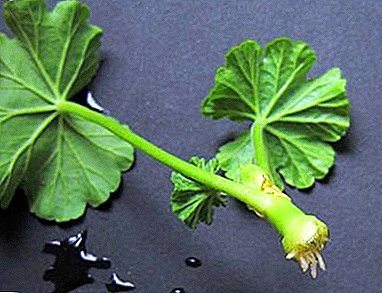 The ready shoot is dried in the open air within several hours.
The ready shoot is dried in the open air within several hours.- It will not be superfluous to treat the cut sites with an insecticide or simply wood ash.
- Capacity for landing is chosen very small. Suitable and the usual plastic cup. At the bottom you need to make several holes for air circulation or discharge of excess fluid.
- Before planting, the soil is decontaminated. For this, it is treated with a weak solution of potassium permanganate.
- After drying, the stalk is placed in a container.
- A pot with a flower is placed in a well-lit place, but in such a way that the sun rays do not fall on it.
- Water the cutting as needed - only after drying the soil.
- Air temperature should not fall below 15 degrees Celsius.
Often, after three or four weeks rooting of the stalk occurs.
Seeds
If the florist decided to propagate Pelargonium terry with the help of seeds, he should follow some rules.
- The time of sowing seeds - from the beginning of autumn until the end of spring. It is advisable to use for this purchase materials.
- The soil fits the usual universal, but it will need to add a little peat.
- In the case of self-harvesting seeds from flowering plants, it is better to wipe them with sandpaper for better germination.
- Seeds are planted shallowly in the ground. Between the planting material leaves a place of five centimeters. After that, the soil is moistened with a spray gun.
- Capacity with seeds covered with a film or glass.
- The temperature should be maintained at 20 degrees.
- After a week you can see the first seedlings.
- Seedlings are seated in separate containers only after three or four leaves appear on them.
Terry Pelargonium is one of the most beautiful representatives of its family. Which also does not require special care. One has only to follow a few simple rules, and the flower will thank you for its excellent appearance.


 The ready shoot is dried in the open air within several hours.
The ready shoot is dried in the open air within several hours.